Blog
Exercising for Diabetics
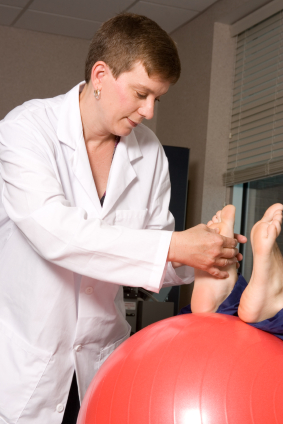 Exercise is crucial when it comes to dealing with diabetes. Extra precautions need to be taken for people with diabetes compared to those without it. A doctor must always be consulted if a person with diabetes wants to change his exercise routine. For diabetics the best time to exercise is one to three hours after eating, when blood sugar levels are at their highest point. It is important for diabetics to test their blood sugar levels before exercising. Having a small snack can raise low blood sugar levels and prevent hypoglycemia. Diabetics should also wear medical alert bracelets while they exercise and carry glucose tablets in case of emergency.
Exercise is crucial when it comes to dealing with diabetes. Extra precautions need to be taken for people with diabetes compared to those without it. A doctor must always be consulted if a person with diabetes wants to change his exercise routine. For diabetics the best time to exercise is one to three hours after eating, when blood sugar levels are at their highest point. It is important for diabetics to test their blood sugar levels before exercising. Having a small snack can raise low blood sugar levels and prevent hypoglycemia. Diabetics should also wear medical alert bracelets while they exercise and carry glucose tablets in case of emergency.
Diabetic foot care is important in preventing foot ailments such as ulcers. If you are suffering from diabetes or have any other concerns about your feet contact one of our podiatrists of New York Foot and Ankle. Our doctors will treat your foot and ankle needs.
Diabetic Foot Care
Diabetes affects millions of people every year. Diabetes can damage blood vessels in many parts of the body, including the feet. Because of this, taking care of your feet is essential if you have diabetes, and having a podiatrist help monitor your foot health is highly recommended.
The Importance of Caring for Your Feet
- Routinely inspect your feet for bruises or sores.
- Wear socks that fit your feet comfortably.
- Wear comfortable shoes that provide adequate support.
Patients with diabetes should have their doctor monitor their blood levels because blood sugar levels play such a huge role in diabetic care. Monitoring these levels on a regular basis is highly advised.
It is always best to inform your healthcare professional of any concerns you may have regarding your feet, especially for diabetic patients. Early treatment and routine foot examinations are keys to maintaining proper health, especially because severe complications can arise if proper treatment is not applied.
If you have any questions please feel free to contact our office located in Bethpage and Franklin Square, NY. We offer the newest diagnostic and treatment technologies for all your foot and ankle needs.
Wear the Right Footwear to Avoid Foot Problems
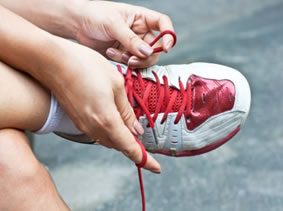 Wearing the right shoes is important in preventing injuries as well as chronic foot problems that may develop later on from repeated wear. Shoes should be rounded and roomy. Avoid shoes that are too tight and which can put pressure on the toes. Tight shoes can lead to the development of issues such as corns, calluses, toenail fungus, ingrown toenails, bunions, and hammertoes.
Wearing the right shoes is important in preventing injuries as well as chronic foot problems that may develop later on from repeated wear. Shoes should be rounded and roomy. Avoid shoes that are too tight and which can put pressure on the toes. Tight shoes can lead to the development of issues such as corns, calluses, toenail fungus, ingrown toenails, bunions, and hammertoes.
Finding a properly-fitting shoe is important in reducing injuries and preventing foot problems. For more information about treatment, contact one of our podiatrists of New York Foot and Ankle. Our doctors will treat your foot and ankle needs.
Proper Shoe Fitting
A common concern when it comes to foot health, having properly fitted shoes can help prevent injuries to the foot. Out feet affect our posture and gait, which in turn affects the biomechanics and overall bodily structure. With 33 joints, 26 bones, and over 100 ligaments, the potential for serious injury is much greater than one realizes. Although the feet cease growth in adulthood, they still change shape as they mature. Here are some factors to consider when it comes to investing in proper fitting shoes:
- Be sure the shoes fit correctly right away
- Ensure the ball of your foot fits comfortably in the widest portion of the shoes
- Even though they may look fashionable, improper fitting shoes can either create adverse conditions or exacerbate existing ones you may already have
- Walk along a carpeted surface to ensure the shoes comfortably fit during normal activity
Keeping in mind how shoes fit the biomechanics of your body, properly-fitting shoes are vitally important. Fortunately, it is not difficult to acquire footwear that fits correctly. Be sure to wear shoes that support the overall structure of your body. Do your feet a favor and invest in several pairs of well-fitted shoes today.
If you have any questions please feel free to contact our offices located in Bethpage and Franklin Square, NY. We offer the newest diagnostic tools and technology to treat your foot and ankle needs.
Flip Flops are not Recommended for the Feet
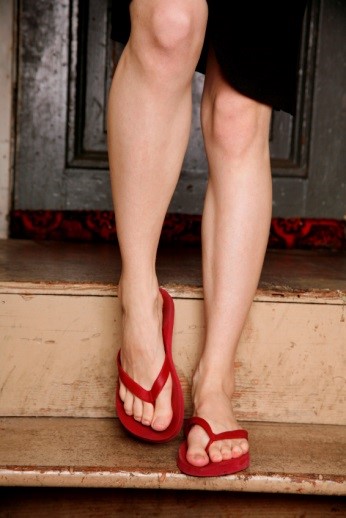 Although flip flops are considered a popular type of footwear, they can also lead to various foot problems. “One study in the United States in 2014 found that of the 198,427 emergency room visits due to shoe-related injuries, 25,300 were associated with flip-flops.” Flip-flops do not offer proper support for your feet, and they require your feet to work overtime to compensate for the lack of toe, heel, arch, and ankle support. Flip-flops can also lead to the forming of blisters with the constant rubbing of the straps against your toes, as well as they do not properly protect your feet.
Although flip flops are considered a popular type of footwear, they can also lead to various foot problems. “One study in the United States in 2014 found that of the 198,427 emergency room visits due to shoe-related injuries, 25,300 were associated with flip-flops.” Flip-flops do not offer proper support for your feet, and they require your feet to work overtime to compensate for the lack of toe, heel, arch, and ankle support. Flip-flops can also lead to the forming of blisters with the constant rubbing of the straps against your toes, as well as they do not properly protect your feet.
Flip-flops are not always the best choice of footwear. If you have any questions concerning the feet, see one of our podiatrists of New York Foot and Ankle. Our doctors will treat your heel pain symptoms in addition to other podiatric-related needs.
Flip-Flops and Feet
When the weather starts warming up, people enjoy wearing flip-flops. Flip-flops are comfortable, stylish, and easy to slip on and off, perfect for any summer beach goer. However, these shoes can cause harm to the feet.
How Can Flip-Flops Affect Me Long-Term?
- Ankle problems
- Hip problems
- Lower back problems
- Pain in the balls of the feet
- Problems with foot arches
- Changes in the way you walk
Are there injuries associated with flip-flops?
Yes. Since flip-flops are relatively weak and do not provide the same amount of support as sneakers, people who wear flip-flops are more susceptible to injuries. On top of that, the open nature of the shoe makes your feet more prone to other problems, such as cuts and even infections. Common injuries and ailments include:
- Sprained ankles
- Blisters
- Infections
- Cuts and Scrapes
I like wearing flip-flops, are there safe alternatives?
When buying flip-flops, try to find ones that have sturdy soles and are made of high quality materials that will support for your feet. These flip-flops will cost more, but will also last longer as a result.
If you have any questions please feel free to contact our offices located in Bethpage and Franklin Square, NY. We offer the newest diagnostic tools and technology to treat your foot and ankle needs.
Rheumatoid Arthritis affects at least 1.5 Percent of the Population
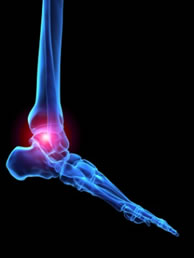 As a progressive autoimmune disease, rheumatoid arthritis “affects 1.5 percent of the population,” usually people who are aged 30 to 60. Rheumatoid arthritis attacks the small joints of the body. The condition typically affects the small joints in the body, such as the hands and the feet, leading to pain, inflammation, and even disability if not addressed immediately.
As a progressive autoimmune disease, rheumatoid arthritis “affects 1.5 percent of the population,” usually people who are aged 30 to 60. Rheumatoid arthritis attacks the small joints of the body. The condition typically affects the small joints in the body, such as the hands and the feet, leading to pain, inflammation, and even disability if not addressed immediately.
Because RA affects more than just your joints, including the joints in your feet and ankles, it is important to seek early diagnosis from your podiatrist if you feel like the pain in your feet might be caused by RA. For more information, see one of our podiatrists of New York Foot and Ankle. Our doctors will treat your heel pain symptoms in addition to other podiatric-related needs.
What Is Rheumatoid Arthritis?
Rheumatoid Arthritis (RA) is an autoimmune disorder in which the body’s own immune system attacks the membranes surrounding the joints. Inflammation of the lining and eventually the destruction of the joint’s cartilage and bone occur, causing severe pain and immobility.
Rheumatoid Arthritis of the Feet
Although RA usually attacks multiple bones and joints throughout the entire body, almost 90 percent of cases result in pain in the foot or ankle area.
Symptoms
- Swelling & pain in the feet
- Stiffness in the feet
- Pain on the ball or sole of feet
- Joint shift and deformation
Diagnosis
Quick diagnosis of RA in the feet is important so that the podiatrist can treat the area effectively. Your doctor will ask you about your medical history, occupation, and lifestyle to determine the origin of the condition. Rheumatoid Factor tests help to determine if someone is affected by the disease.
If you have any questions please feel free to contact our offices located in Bethpage and Franklin Square, NY. We offer the newest diagnostic tools and technology to treat your foot and ankle needs.
We take up to 10,000 Steps Every Day
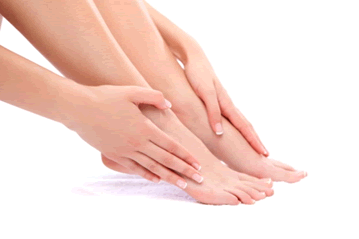 As the average person takes “approximately 10,000 steps per day,” we have to be mindful of taking proper care of our feet. Ensuring that our feet are healthy is essential to our overall body health. Tips for taking care of your feet include inspecting them on a regular basis for any injuries such as peeling skin, especially if you’re a diabetic patient. Make sure that you wear properly-fitting shoes and that you wear shoes in public places that are prone to bacterial infection, such as locker rooms. When washing your feet, dry and moisturize afterwards. Wear sunblock when going out to places such as the beach. Also remember to maintain a healthy diet and an active exercise routine.
As the average person takes “approximately 10,000 steps per day,” we have to be mindful of taking proper care of our feet. Ensuring that our feet are healthy is essential to our overall body health. Tips for taking care of your feet include inspecting them on a regular basis for any injuries such as peeling skin, especially if you’re a diabetic patient. Make sure that you wear properly-fitting shoes and that you wear shoes in public places that are prone to bacterial infection, such as locker rooms. When washing your feet, dry and moisturize afterwards. Wear sunblock when going out to places such as the beach. Also remember to maintain a healthy diet and an active exercise routine.
Every day foot care is very important, especially for those that are lacking the proper foot care resources. For more information about everyday foot care, see one of our podiatrists of New York Foot and Ankle. Our doctors will treat your heel pain symptoms in addition to other podiatric-related needs.
Every Day Foot Care
Often, people take care of their bodies, face and hair more so than they do for their feet. But the feet are a very important aspect of our bodies, and one that we should pay more attention to. After all, without our feet, we would not be able to perform most daily tasks. It is best to check your feet regularly to make sure there are no new bruises or cuts that you may not have noticed before, for example.
For dry feet, moisturizer can easily be a remedy and can be applied as often as necessary to the affected areas. Wearing shoes that fit well can also help you maintain good foot health, as well as making it easier to walk and do daily activities without the stress or pain of ill-fitting shoes, high heels, or even flip flops.
Also, wearing clean socks with closed shoes is important to ensure that sweat and bacteria do not accumulate within the shoe. Clean socks help to prevent athlete’s foot, fungi problems, bad odors, and can absorb sweat.
If you have any questions please feel free to contact our offices located in Bethpage and Franklin Square, NY. We offer the newest diagnostic tools and technology to treat your foot and ankle needs.
What are Corns and Calluses?
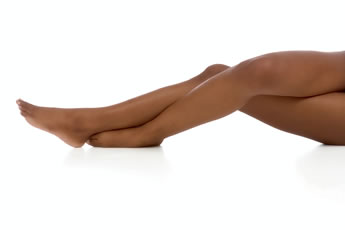 Both corns and calluses are described as thickened areas of layered skin that form in response to constant pressure or irritation on the afflicted areas. Corns are smaller and usually develop around and between your toes, having hard centers. Making sure that your corns do not become inflamed is important. You can try to remove corns and calluses by yourself, but the best option is to see your podiatrist.
Both corns and calluses are described as thickened areas of layered skin that form in response to constant pressure or irritation on the afflicted areas. Corns are smaller and usually develop around and between your toes, having hard centers. Making sure that your corns do not become inflamed is important. You can try to remove corns and calluses by yourself, but the best option is to see your podiatrist.
If you have any concerns about your feet and ankles see one of our podiatrists of New York Foot and Ankle. Our doctors will treat your heel pain symptoms in addition to other podiatric-related needs.
Corns: What are they? And how do you get rid of them?
Corns can be described as areas of the skin that have thickened to the point of becoming painful or irritating. They are often layers and layers of the skin that have become dry and rough, and are normally smaller than calluses.
Ways to Prevent Corns
There are many ways to get rid of painful corns such as wearing:
- Well-fitting socks
- Comfortable shoes that are not tight around your foot
- Shoes that offer support
Treating Corns
Treatment of corns involves removing the dead skin that has built up in the specific area of the foot. Salicylic acid can help in getting rid of these corns because it dissolves keratin, which is the protein that makes up a good majority of corns. Podiatrists recommend that people with diabetes not use salicylic acid but should consult with their podiatrist regarding the treatment of corns.
If you have any questions please feel free to contact our offices located in Bethpage and Franklin Square, NY. We offer the newest diagnostic tools and technology to treat your foot and ankle needs.
Take Care of Your Children’s Feet Early on to Prevent Onset of Problems
 Because children’s feet and ankles are still developing, it’s important for children to take a rest from stressful physical activity such as sports. Some conditions can progress into adulthood, so it’s important for parents to take proper care of their children’s feet. The conditions can include calcaneal apophysitis, inflammation of the heel growth plate; achilles tendonitis, inflammation of the Achilles tendon; plantar fasciitis, inflammation of the tissue that runs along the soles of the feet; and stress fractures, which are small fractures in the bone.
Because children’s feet and ankles are still developing, it’s important for children to take a rest from stressful physical activity such as sports. Some conditions can progress into adulthood, so it’s important for parents to take proper care of their children’s feet. The conditions can include calcaneal apophysitis, inflammation of the heel growth plate; achilles tendonitis, inflammation of the Achilles tendon; plantar fasciitis, inflammation of the tissue that runs along the soles of the feet; and stress fractures, which are small fractures in the bone.
Making sure that your children maintain foot health is very important as they grow up. If you have any questions see one of our podiatrists of New York Foot and Ankle. Our doctors will treat your heel pain symptoms in addition to other podiatric-related needs.
Keeping Children's Feet Healthy
Having healthy feet in childhood can help prevent medical problems later in life, namely in the back and legs. As children grow, their feet require different types of care from birth to school-age.
Although babies do not walk yet, it is still very important to take care of their feet.
- Avoid putting tight shoes or socks on his or her feet
- Allow the baby to stretch and kick his or her feet to feel comfortable
As a toddler, kids are now on the move and begin to develop differently. At this age toddlers are getting a feel for walking, so don’t be alarmed if your toddler is unsteady or ‘walks funny’.
As your child gets older, it is important to teach them how to take care of their feet
- Show them proper hygiene to prevent infections such as fungus
- Be watchful of any pain or injury
- Have all injuries checked by a doctor as soon as possible
- Comfortable, protective shoes should always be worn, especially at play
If you have any questions please feel free to contact our offices located in Bethpage and Franklin Square, NY. We offer the newest diagnostic tools and technology to treat your foot and ankle needs.
Will Chambers Suffered Broken Foot and Required Surgery
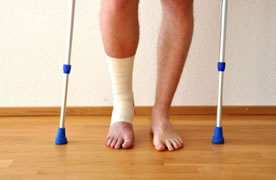 Will Chambers of Melbourne Storm suffered a foot fracture injury in early April in the match against the Canterbury Bulldogs, which required him to have surgery. His post-surgery recovery time was estimated to be about 3 months at the time. His injury was initially thought to not be serious, until his foot swelled up overnight. “We are extremely disappointed to lose Will, he’s an important part of our team,” said Storm football director Frank Ponissi.
Will Chambers of Melbourne Storm suffered a foot fracture injury in early April in the match against the Canterbury Bulldogs, which required him to have surgery. His post-surgery recovery time was estimated to be about 3 months at the time. His injury was initially thought to not be serious, until his foot swelled up overnight. “We are extremely disappointed to lose Will, he’s an important part of our team,” said Storm football director Frank Ponissi.
A broken foot requires immediate medical attention and treatment. To learn more, see one of our podiatrists of New York Foot and Ankle. Our doctors will treat your heel pain symptoms in addition to other podiatric-related needs.
Broken Foot Causes, Symptoms, and Treatment
A broken foot is caused by one of the bones in the foot typically breaking when bended, crushed, or stretched beyond its natural capabilities. Usually the location of the fracture indicates how the break occurred, whether it was through an object, fall, or any other type of injury.
Common Symptoms of Broken Feet:
- Bruising
- Pain
- Redness
- Swelling
- Blue (foot)
- Numbness
- Cold
- Misshapen
- Cuts
- Deformities
Those that suspect they have a broken foot shoot seek urgent medical attention where a medical professional could diagnose the severity.
Treatment for broken bones varies depending on the cause, severity and location. Some will require the use of splints, casts or crutches while others could even involve surgery to repair the broken bones. Personal care includes the use of ice and keeping the foot stabilized and elevated.
If you have any questions please feel free to contact our offices located in Bethpage and Franklin Square, NY. We offer the newest diagnostic tools and technology to treat your foot and ankle needs.
Treating Your Blisters
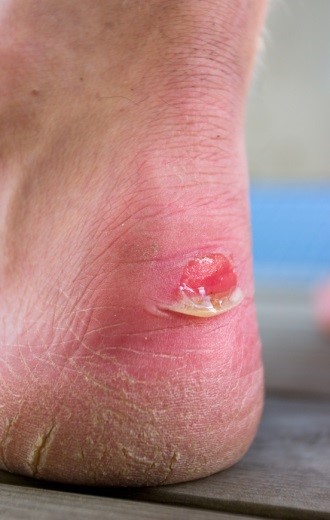 Not only can blisters be unsightly, but they can become irritating and detrimental to our everyday activities. There are many different ways to prevent blisters, and they involve buying properly-fitting shoes, choosing breathable material such as leather for footwear, and finding the proper support for your feet. Avoid picking at your blisters until they’re ready to be drained. Sterilize a needle and use an antibacterial treatment such as Neosporin immediately following the draining.
Not only can blisters be unsightly, but they can become irritating and detrimental to our everyday activities. There are many different ways to prevent blisters, and they involve buying properly-fitting shoes, choosing breathable material such as leather for footwear, and finding the proper support for your feet. Avoid picking at your blisters until they’re ready to be drained. Sterilize a needle and use an antibacterial treatment such as Neosporin immediately following the draining.
Blisters are prone to making everyday activities extremely uncomfortable. If your feet are hurting, see one of our podiatrists of New York Foot and Ankle. Our doctors will treat your heel pain symptoms in addition to other podiatric-related needs.
Foot Blisters
Foot blisters develop as a result of constantly wearing tight or ill-fitting footwear. This happens due to the constant rubbing from the shoe, which can often lead to pain.
What are Foot Blisters?
A foot blister is a small fluid-filled pocket that forms on the upper-most layer of the skin. Blisters are filled with clear fluid and can lead to blood drainage or pus if the area becomes infected.
How do Blisters Form?
Blisters on the feet are often the result of constant friction of skin and material, usually by shoe rubbing. Walking in sandals, boots, or shoes that don’t fit properly for long periods of time can result in a blister. Having consistent foot moisture and humidity can easily lead to blister formation.
Prevention & Treatment
It is important to properly care for the affected area in order to prevent infection and ease the pain. Do not lance the blister and use a Band-Aid to provide pain relief. Also, be sure to keep your feet dry and wear proper fitting shoes. If you see blood or pus in a blister, seek assistance from a podiatrist.
If you have any questions please feel free to contact our offices located in Bethpage and Franklin Square, NY. We offer the newest diagnostic tools and technology to treat your foot and ankle needs.
Strained Plantar Fascia may cause Heel Pain
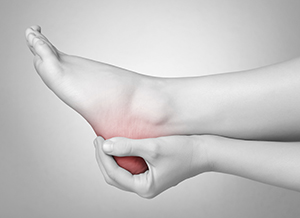 If you suffer from chronic heel and foot pain, it may be because your plantar fascia ligament is irritated or strained. Heel and foot pain can also be caused by plantar fasciitis, the number one leading cause, but it can also result from strenuous exercise on the feet. Stretch and relax your foot muscles by rolling the bottom of your feet on something round. Also make sure to have footwear that has proper support for your feet.
If you suffer from chronic heel and foot pain, it may be because your plantar fascia ligament is irritated or strained. Heel and foot pain can also be caused by plantar fasciitis, the number one leading cause, but it can also result from strenuous exercise on the feet. Stretch and relax your foot muscles by rolling the bottom of your feet on something round. Also make sure to have footwear that has proper support for your feet.
Anyone can wind up suffering from heel pain. For more information, see one of our podiatrists of New York Foot and Ankle. Our doctors will treat your heel pain symptoms in addition to other podiatric-related needs.
Causes of Heel Pain
● Heel pain is often associated with plantar fasciitis. The plantar fascia is a band of tissues that extends along the bottom of the foot. A rip or tear in this ligament can cause inflammation of the tissue.
● Achilles tendonitis is another cause of heel pain. Inflammation of the Achilles tendon will cause pain from fractures and muscle tearing. Lack of flexibility is also another symptom.
● Heel spurs are another cause of pain. When the tissues of the plantar fascia undergo a great deal of stress, it can lead to ligament separation from the heel bone, causing heel spurs.
Why Might Heel Pain Occur?
- Wearing ill-fitting shoes
- Wearing non-supportive shoes
- Weight change
- Excessive running
Treatments
Heel pain should be treated as soon as possible for immediate results. Keeping your feet in a stress free environment will help. If you suffer from Achilles tendonitis or plantar fasciitis, applying ice will reduce the swelling. Stretching before an exercise like running will help the muscles. Using all these tips will help make heel pain a thing of the past.
With the advancements in technology and greater knowledge of how muscles and joints work, physical therapists can turn things around dramatically.
If you have any questions please feel free to contact our offices located in Bethpage and Franklin Square, NY. We offer the newest diagnostic tools and technology to treat your foot and ankle needs.
More...
Preventing and Treating Toenail Fungus
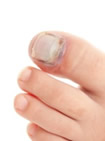 Nail fungus make up about “50% of all nail disorders,” according to the American Academy of Dermatology. When preventing nail fungus, wash and dry your hands and feet thoroughly and with soap. Nail fungus thrives in wet places, can hide beneath your nail polish, and is contagious. If you find that your nails are crumbling, thickening, becoming yellowish, or peeling, you may have nail fungus. Treatment for nail fungus may take up to several months, so make sure to treat it right away.
Nail fungus make up about “50% of all nail disorders,” according to the American Academy of Dermatology. When preventing nail fungus, wash and dry your hands and feet thoroughly and with soap. Nail fungus thrives in wet places, can hide beneath your nail polish, and is contagious. If you find that your nails are crumbling, thickening, becoming yellowish, or peeling, you may have nail fungus. Treatment for nail fungus may take up to several months, so make sure to treat it right away.
While toenail fungus is troublesome to eradicate, doing so is not impossible. If you have any concerns with your feet consult with one of our podiatrists of New York Foot and Ankle. Our doctors will assist you with all of your foot and ankle needs.
Toenail Fungus Treatment
Toenail fungus is a problem which affects many people and is hard to get rid of. Fortunately, there are several methods to go about treating toenail fungus.
Antibiotics & Treatments
Lamisil – is the most commonly effective treatment for toenail fungus. It is available as an antibiotic Terbinafine tablet and cream. Terbinafine is a chemical component which kills fungal growth on the body. Applying regular doses will gradually kill the fungal growth. It is important to keep the area clean and air free.
Talcum powder – applying powder on the feet and shoes helps keep the feet free of moisture and sweat.
Sandals or open toed shoes – wearing these will allow air movement and help keep feet dry. They also expose your feet to light, which fungus cannot tolerate. Socks with moisture wicking material also help as well
Alternative Treatments
There are always surgical procedures that are available for toenail fungus. Some people would like immediate quick removal of toenail fungus. Surgeons will be able to cut through and remove the growth using laser surgery. It is important not to try and remove it yourself. Once removed, your old shoes will need to be replaced to avoid reinfection.
If you have any questions please feel free to contact our offices located in Bethpage and Franklin Square, NY. We offer the newest diagnostic tools and technology to treat your foot and ankle needs.
Managing Your Morton’s Neuroma
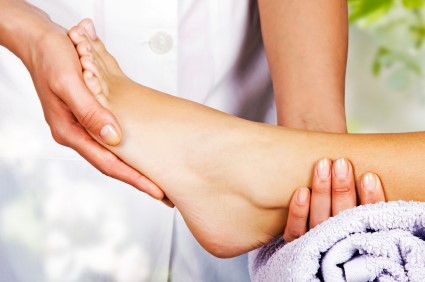 If you notice “a tingling or numbness under the ball of your foot,” you may have Morton’s neuroma. Although the condition is not serious, Morton’s neuroma is characterized by “a benign accumulation of fibrous tissue” around your medial plantar nerve. Simply put, the condition affects the area between your foot’s metatarsal bones, resulting in pain and irritation. Common solutions for Morton’s neuroma include changing your footwear, over-the-counter medicines and cortisone injections for treating the pain, custom pad supports or orthotics, and the last option of surgery.
If you notice “a tingling or numbness under the ball of your foot,” you may have Morton’s neuroma. Although the condition is not serious, Morton’s neuroma is characterized by “a benign accumulation of fibrous tissue” around your medial plantar nerve. Simply put, the condition affects the area between your foot’s metatarsal bones, resulting in pain and irritation. Common solutions for Morton’s neuroma include changing your footwear, over-the-counter medicines and cortisone injections for treating the pain, custom pad supports or orthotics, and the last option of surgery.
Morton’s Neuroma is a very uncomfortable condition to live with. If you think you have Morton’s neuroma consult with one of our podiatrists of New York Foot and Ankle. Our doctors will assist you with all of your foot and ankle needs.
Morton’s Neuroma
Morton's neuroma is a painful foot condition that commonly affects the areas between the second and third or third and fourth toe, although other areas of the foot are also susceptible. Morton’s neuroma is caused by an inflamed nerve in the foot that is being squeezed and aggravated by surrounding bones.
What Increases the Chances of having Morton’s Neuroma?
- -Ill-fitting high heels or shoes that add pressure to the toe or foot
- -Jogging, running or any sport that involves constant impact to the foot
- -Flat feet, bunions, and any other foot deformities
Morton’s neuroma is a very treatable condition. Orthotics and shoe inserts can often be used to alleviate the pain on the forefront of the feet. In more severe cases, corticosteroids can also be prescribed. In order to figure out the best treatment for your neuroma, it’s recommended to seek the care of a podiatrist who can diagnose your condition and provide different treatment options.
If you have any questions please feel free to contact our offices located in Bethpage and Franklin Square, NY. We offer the newest diagnostic tools and technology to treat your foot and ankle needs.
New Smart Shoes Offer Various Benefits for the Feet
 Thanks to Samsung, you may be finding a new pair of smart shoes on the shelves. Called the IoFit Smart Balance, these shoes have been installed with pressure sensors, Bluetooth transmitters, and batteries. The smart shoes are said to not only be convenient like a smartphone, but they can also measure your foot performance in sports such as golfing and compare it in real time to professional sports personalities. The shoes “can determine your left-right and front-back balance, and ground contact force” and record and transfer the data.
Thanks to Samsung, you may be finding a new pair of smart shoes on the shelves. Called the IoFit Smart Balance, these shoes have been installed with pressure sensors, Bluetooth transmitters, and batteries. The smart shoes are said to not only be convenient like a smartphone, but they can also measure your foot performance in sports such as golfing and compare it in real time to professional sports personalities. The shoes “can determine your left-right and front-back balance, and ground contact force” and record and transfer the data.
The right running shoe is essentially different for every person. If you have any concerns consult with one of our podiatrists of New York Foot and Ankle. Our doctors will assist you with all of your foot and ankle needs.
Choosing the Right Running Shoes for Your Foot Type
Running is a physical activity although fun, can put a lot of stress on the joints, bones and ligaments of the body. Injury and stress on the foot can be an important factor on which kind of shoe you’re wearing. Running shoes should be worn based on your foot type. It is important to find out what fits you based on cushioning, stability and motion.
Determining your type
Speak with a shoe specialist or retail professional to see what your foot type is. They will be able to identify and measure your arch type, stride and gait.
Running Mechanics
When you are running or walking in your shoes, every step determines how your foot is landing. Pronation is the natural rolling of your ankle from outside to inside during foot strike.
Pronation is a correct form of walking or running. It helps absorb shock and store energy from your lower extremities. Neutral runners who pronate correctly do not need specific shoes, since they have stability and control.
Over-pronators
Those who run with excessive ankle rolling. Over-pronators tend to have ankles that angle inward, flat feet, and or bowed legs. This can cause a series of injuries: of the knees, ankles and Achilles tendons.
Under-pronation
Under-pronation is less common than over-pronation. This usually happens to those who have inflexible feet and high arches. Even though there is less rotational stress on the ankles and knees, it prevents any kind of shock absorptions. Under-pronation needs shoes with increase in cushion and flexibility.
If you have any questions please feel free to contact our offices located in Bethpage and Franklin Square, NY. We offer the newest diagnostic tools and technology to treat your foot and ankle needs.
Sneaker Designer Develops Custom Line of High Heels that Offer Comfort
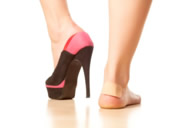 Sneaker designer Christopher Dixon has developed his own line of high-end high heels that offer comfort for the feet. When Dixon first visited his best friend’s cousin’s closet, full of high heel shoes, he realized how uncomfortable and painful wearing high heels must be for women. His collection, in which shoes feature two heels instead of one, was created with stability and comfort in mind. Dixon explains “that [the] extra point of contact between ankle and cement actually makes the shoes easier to walk in by improving weight distribution and taking some of the pressure off the arch of the foot.”
Sneaker designer Christopher Dixon has developed his own line of high-end high heels that offer comfort for the feet. When Dixon first visited his best friend’s cousin’s closet, full of high heel shoes, he realized how uncomfortable and painful wearing high heels must be for women. His collection, in which shoes feature two heels instead of one, was created with stability and comfort in mind. Dixon explains “that [the] extra point of contact between ankle and cement actually makes the shoes easier to walk in by improving weight distribution and taking some of the pressure off the arch of the foot.”
High heels have a history for causing foot and ankle problems. If you have any concerns about your feet or ankles, consult with one of our podiatrists of New York Foot and Ankle. Our doctors will assist you with all of your foot and ankle needs.
Effects of High Heels on the Feet
High heels are popular shoes among women because their style and societal appeal. Despite this, they can still cause many health problems if worn too frequently.
What parts my body will be affected by high heels?
- Ankle Joints
- Achilles Tendon – may shorten and stiffen with prolonged wear
- Balls of the Feet
- Knees – heels cause the knees to bend constantly, creating stress on them
- Back – they decrease the spine’s ability to absorb shock, which may lead to back pain. Also, the vertebrae of the lower back may compress.
What kinds of foot problems can develop from wearing high heels?
- Corns
- Calluses
- Hammertoe
- Bunions
- Morton’s Neuroma
- Plantar Fasciitis
How can I still wear high heels and maintain foot health?
If you want to wear high heeled shoes, make sure that you are not wearing them every day, as this will help prevent long term physical problems. Try wearing thicker heels as opposed to stilettos to distribute weight more evenly across the feet. Always make sure you are wearing the proper shoes for the right occasion, such as sneakers for exercising. If you walk to work, try carrying your heels with you and changing into them once you arrive at work. Adding inserts to your heels can help cushion your feet and absorb shock. Full foot inserts or metatarsal pads are available.
If you have any questions please feel free to contact our offices located in Bethpage and Franklin Square, NY. We offer the newest diagnostic tools and technology to treat your foot and ankle needs.
